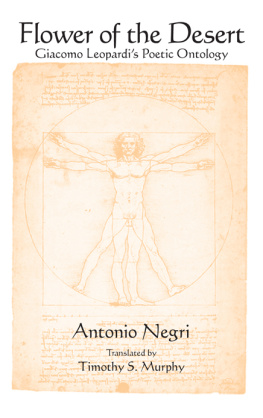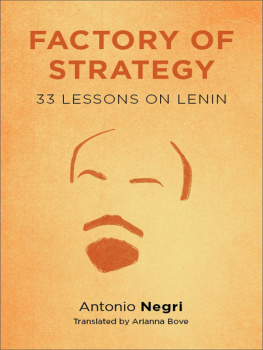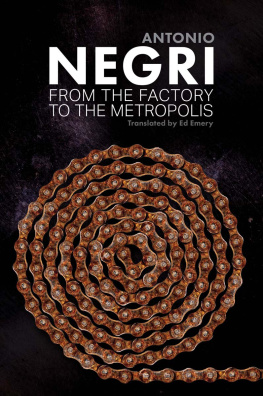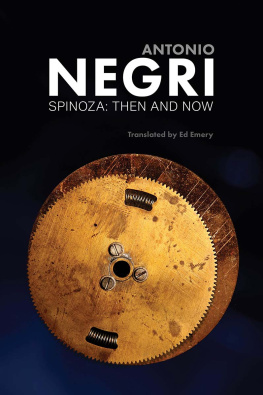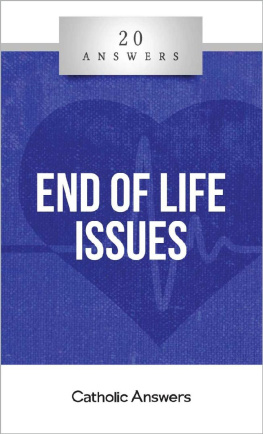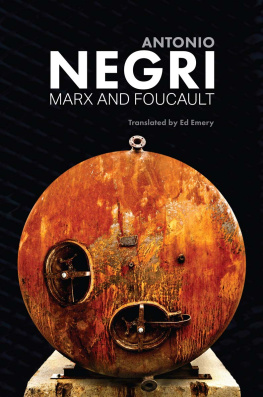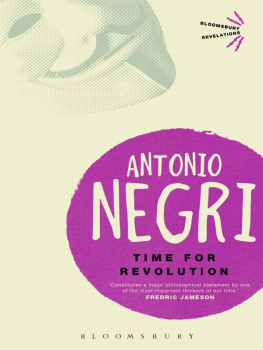Antonio Negri - Flower of the Desert
Here you can read online Antonio Negri - Flower of the Desert full text of the book (entire story) in english for free. Download pdf and epub, get meaning, cover and reviews about this ebook. City: New York, year: 2015, publisher: State University of New York Press, genre: Romance novel. Description of the work, (preface) as well as reviews are available. Best literature library LitArk.com created for fans of good reading and offers a wide selection of genres:
Romance novel
Science fiction
Adventure
Detective
Science
History
Home and family
Prose
Art
Politics
Computer
Non-fiction
Religion
Business
Children
Humor
Choose a favorite category and find really read worthwhile books. Enjoy immersion in the world of imagination, feel the emotions of the characters or learn something new for yourself, make an fascinating discovery.
- Book:Flower of the Desert
- Author:
- Publisher:State University of New York Press
- Genre:
- Year:2015
- City:New York
- Rating:4 / 5
- Favourites:Add to favourites
- Your mark:
- 80
- 1
- 2
- 3
- 4
- 5
Flower of the Desert: summary, description and annotation
We offer to read an annotation, description, summary or preface (depends on what the author of the book "Flower of the Desert" wrote himself). If you haven't found the necessary information about the book — write in the comments, we will try to find it.
Flower of the Desert — read online for free the complete book (whole text) full work
Below is the text of the book, divided by pages. System saving the place of the last page read, allows you to conveniently read the book "Flower of the Desert" online for free, without having to search again every time where you left off. Put a bookmark, and you can go to the page where you finished reading at any time.
Font size:
Interval:
Bookmark:

Giacomo Leopardis Poetic Ontology
Antonio Negri
Translated by Timothy S. Murphy

Original Italian publications, Lenta Ginestra: Saggio su Leopardi
1987 SugarCo, 2001 Mimesis
Published by State University of New York Press, Albany
2015 State University of New York
All rights reserved
Printed in the United States of America
No part of this book may be used or reproduced in any manner whatsoever without written permission. No part of this book may be stored in a retrieval system or transmitted in any form or by any means including electronic, electrostatic, magnetic tape, mechanical, photocopying, recording, or otherwise without the prior permission in writing of the publisher.
For information, contact State University of New York Press, Albany, NY
www.sunypress.edu
Production, Eileen Nizer
Marketing, Anne M. Valentine
Library of Congress Cataloging-in-Publication Data
Negri, Antonio, 1933
[Lenta ginestra. English]
Flower of the desert : Giacomo Leopardis poetic ontology / Antonio Negri; translated by Timothy S. Murphy.
pages cm. (SUNY series in contemporary Italian philosophy)
Includes bibliographical references and index.
ISBN 978-1-4384-5847-2 (hardcover : alk. paper)
ISBN 978-1-4384-5848-9 (e-book)
1. Leopardi, Giacomo, 17981837Philosophy. I. Murphy, Timothy S., 1964-translator. II. Title. III. Title: Giacomo Leopardis poetic ontology.
| PQ4710.N3913 2015 | |
| 851.7dc23 | 2014045876 |
10 9 8 7 6 5 4 3 2 1
SUNY series in Contemporary Italian Philosophy
Silvia Benso and Brian Schroeder, editors

For Nina

Throughout this book, Antonio Negri cites Giacomo Leopardis works from the Sansoni edition assembled by Walter Binni and Enrico Ghidetti, Tutte le opere (Florence, 1976), in two volumes. Volume 2 contains the Zibaldone and volume 1 contains all Leopardis other works. References to those volumes in the notes are abbreviated TO I and TO II , followed by page numbers. In addition, Negri cites Leopardis Canti in the critical edition by Emilio Peruzzi (Milan: Rizzoli, 1981); references to this edition in the notes are abbreviated as Peruzzi, followed by page numbers.
Since no uniform English edition of Leopardis works yet exists, this translation draws upon the following versions of individual works (and often modifies them in order to conform more closely to the details of Negris interpretations):
The Canti , translated by J.G. Nichols (Manchester: Carcanet, 1994) and abbreviated as Nichols.
The Letters of Giacomo Leopardi 18171837 , selected and translated by Prue Shaw (Leeds: Northern Universities Press, 1998) and abbreviated as Shaw; many of Leopardis letters are not included in Shaws translation and the notes reflect this.
The Moral Essays (Operette morali) , translated by Patrick Creagh (New York: Columbia University Press, 1983) and abbreviated as Creagh.
Pensieri , translated by W.S. Di Piero (Baton Rouge: Louisiana State University Press, 1981) and abbreviated as Di Piero.
The War of the Mice and the Crabs ( Paralipomeni della Batracomiomachia ), translated by Ernesto G. Caserta (Chapel Hill: North Carolina Studies in the Romance Languages and Literatures, 1976) and abbreviated as Caserta.
Zibaldone , edited by Michael Caesar and Franco DIntino (New York: Farrar Straus Giroux, 2013) and abbreviated as Caesar/DIntino. According to the conventions of Italian Leopardi scholarship, all references to the Zibaldone begin with the page numbers to Leopardis original manuscript, followed by the page numbers of TO II and Caesar/DIntino.
Like all my translations, this one has taken a long time to complete, but the delay allowed me to benefit from the help of many friendly and capable people. First of all I would like to thank Toni Negri for his encouragement and support of this project and many others over the past twenty-four years. Linda Austin, Dan Cottom, Michael Hardt, and Martin Wallen read drafts of this translation, and their keen eyes saved me from many errors and embarrassments. I also owe a debt to the translators of the French edition of Lenta ginestra , Nathalie Gailius and Giorgio Passerone, whose work helped me to clarify Negris syntax in numerous places. Silvia Benso and Brian Schroeder, the editors of SUNY Presss Contemporary Italian Philosophy series, remained enthusiastic about this book throughout the editorial and production processes; and Andrew Kenyon, the philosophy acquisitions editor, has been extraordinarily flexible and patient. As always, Juliana made sure that I had an ideal working environment (and that I kept at it even when the magnitude of the project daunted me), while Daisy and Emma made sure none of my reference books blew off my desk. Dont blame any of them for whatever errors or embarrassments remain.
The present translation of The European Leopardi was originally published in Genre: Forms of Discourse and Culture 33:1 (Spring 2000), pp.1326. It is reprinted here, in revised form, by permission of the University of Oklahoma.

Leopardi and Us
When Antonio Negri was arrested in 1979 on spurious, politically motivated charges of masterminding the kidnapping and assassination of former Italian prime minister Aldo Moro and of armed insurrection against the powers of the state, his double career as a distinguished university professor and an intransigent political militant effectively came to an end. Although the University of Padua reluctantly kept him on the payroll for several years thereafter (at less than a third of his salary, which went to his family), and although the participants in Autonomia operaia [Workers Autonomy] and other militant groups continued to look to him for analysis and inspiration, his years of shuttling back and forth between the lecture hall and the factory gates were over. He was cut off from his comrades as well as his colleagues and students, despite the fact that many of them had been imprisoned along with him on similar charges. As his own pretrial period of detention stretched from weeks to months to years, and as the political movements in which he had participated were systematically decimated by state repression, he came to the sobering realization that his work and, indeed, his very life would need a new foundation. He sought that new foundation in the study of three disparate figures who had been important to him since youth. The first of these was Baruch Spinoza, to whom Negri dedicated his first years work while in prison; the result of that work is his celebrated book The Savage Anomaly: The Power of Spinozas Ethics and Politics (1980, translated into English in 1991). The third was Job, from the Old Testament, whom Negri reads against the grain in The Labor of Job (1990, translated into English in 2009). The second was Giacomo Leopardi, whose materialist ontology Negri celebrates in Lenta ginestra (1987), the English translation of which you now hold in your hands.
Taken together, these three books constitute Negris credo, his attempt to construct a new conceptual and affective basis for thought and militancy in the wake of his prison experience. In explicating Spinozas radically immanent second foundation in the Ethics , Negri begins to construct his own second foundation, and he demonstrates its tremendous critical power It is by far the longestat over 180,000 words, it is only a few pages shorter than Negris longest solo work, Insurgencies: Constituent Power and the Modern State (1992)and it focuses on a writer who is best known as a poet and philologist, not as a metaphysician or political philosopher. Although Negri had rarely referred to Leopardi in his previous writings, the entry in his prison diary for March 26, 1983 explains his renewed fascination:
Font size:
Interval:
Bookmark:
Similar books «Flower of the Desert»
Look at similar books to Flower of the Desert. We have selected literature similar in name and meaning in the hope of providing readers with more options to find new, interesting, not yet read works.
Discussion, reviews of the book Flower of the Desert and just readers' own opinions. Leave your comments, write what you think about the work, its meaning or the main characters. Specify what exactly you liked and what you didn't like, and why you think so.

